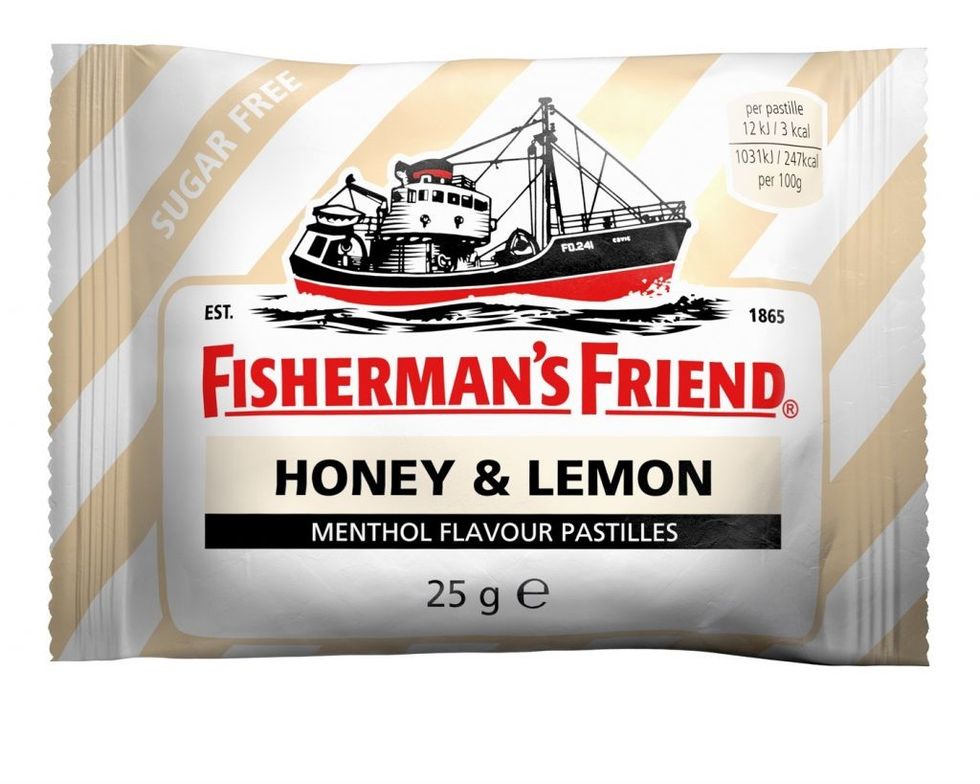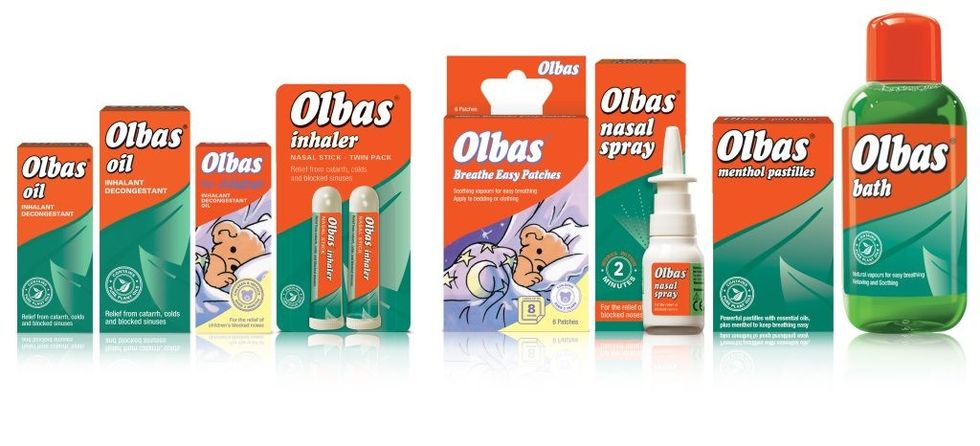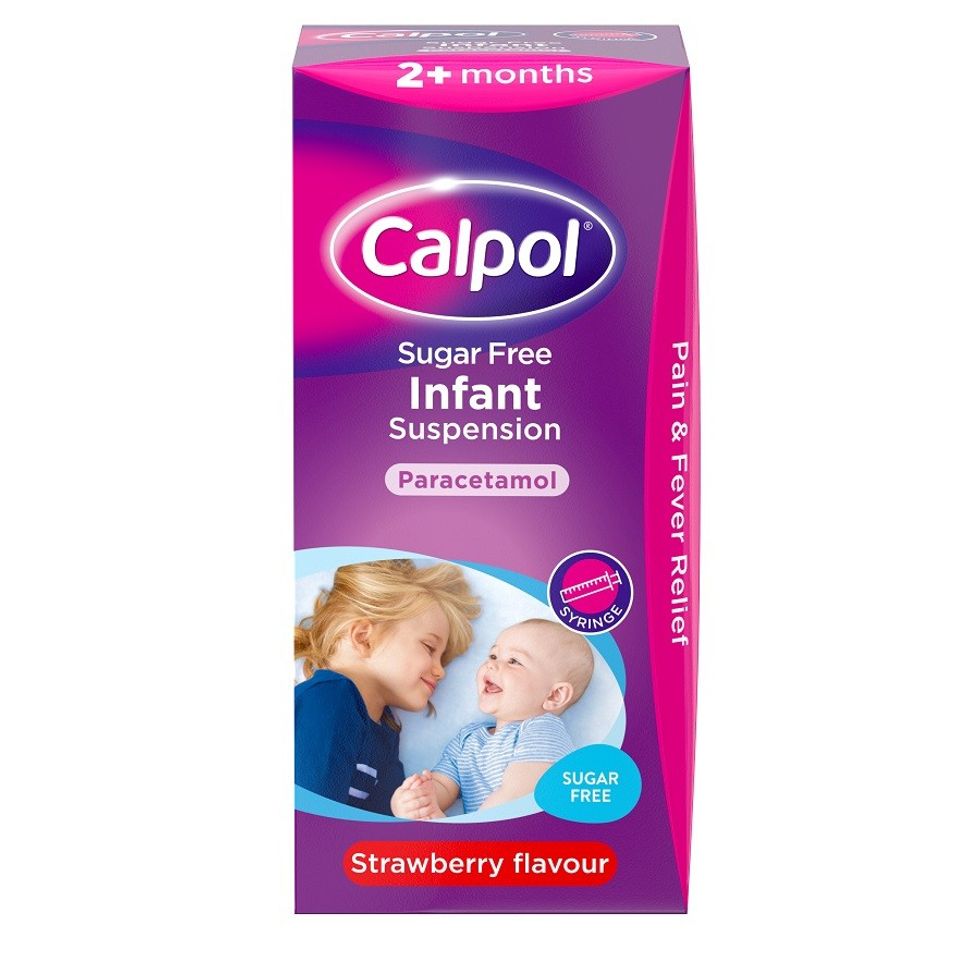The OTC medication category is becoming a firm fixture in the convenience channel, and with good reason
One of the brightest categories in convenience is over-the-counter (OTC) remedies, sales of which are in rude health: the market is worth £2bn total, with £144m of it in the independent convenience channel.
There are a number of reasons for recent growth. Partly because, while Covid is behind us (although with regular flare-ups), caution remains. The nation now pays more attention to its minor symptoms and rushes out to find a treatment instead of ignoring a sniffle or a headache. Going via the NHS, however, has never been harder, which leaves the nearby neighbourhood store with its inviting shelves of well-loved brands and proven products looking most appealing.

Claire Campbell, Senior Brand Manager at Olbas, notes that 2022 saw the category grow 11.6 per cent above inflation, which is likely to continue this winter. “The market has surpassed its pre-pandemic value and last year saw England suffer its worst flu season in over a decade,” says Claire. “In fact, we’ve already seen this pattern emerge with the percentage of adults experiencing a cold in the last 12 months increase by 37 per cent to 48 per cent.”
She explains that the pandemic fundamentally shifted consumer behaviour so that now it prioritises health, which has resulted in the winter remedy and broader OTC category remaining far more buoyant than others in the grocery channel: “Consumers actively seek out trusted, effective and convenient solutions to help relieve the common symptoms associated with winter ailments which is where brands are winning out.”
Jakemans’ Senior Brand Manager, Elizabeth Hughes-Gapper, points out that most adults suffer two to four colds a year, so stocking OTC winter remedies during the autumn and winter seasons provides a huge opportunity for independent retailers. That is only growing in scope as it gets harder to see a doctor.
She says the long-term trend for health self-education and -medication helps indies as consumers who are ill will go to their nearest shop and buy medicines, whatever the cost, as it is a distress purchase.
Convenience stores are increasingly coming to challenge pharmacies as the first point of medical aid, not least because of their longer opening hours and increasingly wide ranges of remedies and palliatives. “With incident rates of common illnesses such as coughs, colds and flus on the rise, it’s likely that the category will return to pre-COVID performance,” says Elizabeth. “In fact, we’ve already seen this pattern emerge with the percentage of adults experiencing a cold in the last 12 months increase by 37 per cent to 48 per cent.”

The DCS Group, which produces many brands including Vicks, Strepsils and Lemsip, is excellently positioned as a c-channel hero. Head of Insight Matt Stanton says that Winter Meds is known as a "reactive" healthcare category and should be marketed as such: “Shoppers have a problem, and they need an effective solution as soon as possible, and they trust brands to do the job.”
He explains that shoppers are looking for a quick and effective solution to their unpleasant symptoms, and c-stores that offer a good core range are ideally positioned to attract customers who want to shop nearby to save time, especially since they are struggling to get appointments with their GP or dentist, and are increasingly time poor. That means branded healthcare is growing ahead of private label in the UK (+3.6 per cent growth in brands vs. -4.6 per cent decline in private label), which is in contrast to many other grocery categories in the current cost-of-living crisis.
“Medicines shoppers are extremely brand loyal because shoppers see brands as the experts, who produce products that can be trusted to get the job done,” Stanton says. “Whereas other grocery categories are seeing shoppers trading down to cheaper private label products, shoppers are less likely to do this on medicines.”
Seasonal sales
Elizabeth Hughes-Gapper says that as winter ailment cases continue to rise, independent retailers should be prepared for an uplift in demand for cold and flu remedies. Ensuring the OTC category offers a mix of products and formats will ensure retailers capitalise on demand throughout the cold and flu season: “Not only will a large range be needed to treat winter ailments such as a cough or sore throat, but in 2022, lozenges saw a 10 per cent increase in popularity as a format type in medicated confectionery so it’s important that these are part of the core offering,” she adds, pointing out that Jakemans is the No.1 cough and throat lozenge brand, in a range of different product formats that appeal to different consumer needs, such as 73g (in all seven flavours) and 160g (available in the top three flavours, Throat & Chest, Honey & Lemon, and Cherry) bag formats and stick packs which offer convenience and choice for consumers.
Fisherman’s Friend is another legendary lozenge, and Regional Business manager Jon White says that “Medicated confectionery products are purchased across stores of all shapes and sizes. Grocery naturally takes the biggest share from a total category perspective, accounting for half of sales, followed by chemists (26 per cent), then impulse and convenience stores (24 per cent).
He says this proves no matter what your store type is, it’s important to dedicate space to popular products – such as Fisherman’s Friend – to take advantage of the sales opportunity the category and brand presents – and again, high brand recognition from long-established products sells especially well in this category.
“Medicines shoppers are extremely brand loyal because shoppers see brands as the experts, who produce products that can be trusted to get the job done,” adds Stanton, although he also adds that most retailers should continue to stock own-label paracetamol and ibuprofen products alongside the leading brands (Nurofen, Anadin and Panadol), if they are looking to attract larger top-up missions.
“The essential nature of cold and flu products, coupled with the value consumers place on their health, means that the category is fairly well protected from the common spending patterns and behaviours we’ve seen emerge in response to the cost-of-living crisis,” agrees Claire Campbell.
Going natural
Campbell emphasises that the biggest opportunity for innovation is meeting the interest in natural ingredients as over half (53 per cent) of adults agree more brands should use natural ingredients in cold and flu remedies.
This helps the OTC category as such ingredients are not normally subject to prescription and may be freely sold in the c-channel – so, a pleasing trend!

“With a continued increase in ailments, as well as COVID-19 highlighting the importance of good health, consumers are placing more value on their health and becoming more aware of the ingredients contained in the products they consume,” says Elizabeth Hughes-Gapper. As a result of this, she says retailers should look to promote the use of natural ingredients in their products. “For example, Jakemans uses only the finest natural ingredients in each tasty lozenge bursting with menthol … the OTC market has witnessed a particular demand for products with a variety of flavours as research shows that 19 per cent of adults are interested in remedies with different flavour options.”
Jakemans provides a range of soothing menthol lozenges in a range of flavours such as Throat & Chest, Honey & lemon, Cherry, Peppermint, Blackcurrant, Menthol & Eucalyptus and Blueberry. She says that such choice increases ales.
“Consumers actively seek out trusted, effective and convenient solutions to help relieve the common symptoms associated with winter ailments which is where brands are winning out," says Claire Campbell: “This is evident as Olbas Oil remains the nation’s favourite decongestant oil. The special mixture of pure plant oils such as eucalyptus, mint, clove, juniper berry and cajuput create the distinctive soothing and relieving vapours renowned with Olbas.”
The natural ingredients trend aligns nicely with the treat-yourself-at-home ethos, which is convenient (no pun intended) as doctors are now so hard to catch in the wild.
“To maximise sales as consumers are encouraged to self-treat at home, retailers should ensure all cold and flu remedies are stocked together, offering a range of formats where possible to support various symptoms and keeping well-loved brands on show ... Placing solutions for adults and children together will also help shoppers assess the best options for treating the whole family.”
Healthy impulses
Another aspect of burgeoning OTC remedies sales in the c-channel is the impulse angle. Elizabeth Hughes-Gapper explains how there is a greater demand for convenient and “on the go” solutions, providing an enhanced opportunity for indies: “Not only can retailers benefit from the impulse need shoppers have, but by stocking formats that offer greater convenience for ‘on-the-go’ consumption retailers will do well.”
She says retailers should place winter ailment remedies in prominent locations, so they have the best visibility on shelf, and ideally they should be dual sited where possible to help with ease of purchase. “All Jakemans products are sold in shelf ready packaging making it easy to display, whether on shelf or at the till, and making it easier for consumers to pick their brand of choice.”
Claire Campbell recommends dedicating shelf space for winter remedies to make it easy for consumers to locate and browse the category. “Stocking a mix of formats will appear to a wider consumer base, alongside options for children and adults,” she says. “Many brands offer dedicated paediatric products within their range, placing these alongside the original adult remedies will help consumers recognise the brand to further support sales. Additionally, as parents continue to prioritise their children’s health above their own, there is an opportunity to encourage parents to purchase OTC remedies to prevent the spread of germs in the household,” adds Claire.
“From a Fisherman’s Friend perspective, [over] a third of our sales come through the impulse channel (39 per cent),” says Jon White, “but this doesn’t mean that convenience store owners should rest on their laurels. Fisherman’s Friend has a growing share in the channel, which means a rising number of shoppers are going to expect to be able to find packs of our well-loved lozenges at their local store. To avoid disappointing your shoppers, make sure you’re stocking the right brands at the right time,” he advises, as that can have a “huge impact” on sales – particularly in times of economic uncertainty when shoppers will be thinking twice before parting with their cash.
"We’re living in an era of unpredictability, so shoppers want to see the brands they love and trust, and which offer good value. Your range across store should reflect this,” says White.
Stanton strongly endorses the family-based approach to merchandising: “It is very important to stock both adult and children’s medicines," he says.
“Both are high value, high frequency categories: Adult winter medicines are worth £447m in the total UK market (up +23.8per cent) and £32.9m in the impulse channel (up +16.8 per cent). Children’s pain and cough remedies are worth £125m in the total UK market (up +19.2 per cent and £13.4m in the impulse channel (up +12.8 per cent).”
Stanton also recommends stocking indigestion meds: “Indigestion remedies are also important at times of year when people eat and drink for special occasions, such as the Q4 festive season,” he points out.
“Around 55 per cent of UK adults suffer from heartburn and indigestion. Whilst 24 per cent of adults are first time or occasional sufferers, 31 per cent are either moderate or frequent sufferers, and these shoppers in particular buy remedies all year round. Heartburn and indigestion remedies are worth £12.1m (+10.5 per cent) in symbols and independents and £201.6m (+7.7 per cent) in the total UK.”
Stanton recommends displaying medicines on the main shop floor rather than behind the counter, as this makes them easier for shoppers to find, “although we would make exceptions for stores with particularly high levels of shoplifting”.
He says that if there is no option to display medicines on the shop floor, then you should at least make sure products have high visibility behind the till and make sure the prices are easy for shoppers to read from a distance: “Having to ask the price creates a barrier for some shoppers.”
Products galore
The OTC remedies and pain management category is extremely well served by – and benefits from – established, and well-loved (and here, the word “love” is certainly not exaggerated) companies and brands, the very sight of whose labels and names already go half-way towards easing symptoms.
Jakemans was established in 1907 and there is little they don’t know about creating delicious menthol confectionery, says Elizabeth Hughes-Gapper, and in January it launched a new sugar-free version of the classic flavour, Throat & Chest, in a 50g bag format. “This was to provide choice for consumers who were looking at actively reducing their sugar intake or where health circumstances govern their choice,” Elizabeth explains.
Throughout the winter season Jakemans will be supported with a strong TV, Radio and PR campaign ensuring consumers recognise the packs on shelf and the brand remains front of mind.
The Jakemans range includes 73g bags available in the following flavours; Throat & Chest, Honey & Lemon, Cherry, Peppermint, Menthol & Eucalyptus, Blackcurrant and Blueberry with 160g bags and 41g stick packs available in Throat & Chest, Honey & Lemon and Cherry. Plus, Jakemans now offer a new sugar free option featuring the much-loved classic flavour, Throat & Chest in a 50g bag format. Made with only the finest ingredients, Jakemans contains no artificial colours or flavours and are suitable for vegetarians. Available from major supermarkets, pharmacies and convenience stores.
“It’s been a year of strong growth for the lozenge and pastilles market, which has seen values sales increase +30 per cent and volumes increase +11.2 per cent across all channels combined1,” says Jon White about the recent good fortunes of Fisherman’s Friend. He thinks this can partly or even mostly put down to “higher – and indeed more normal – incidences of cold and flu post-Covid,” as well as the fact that we are giving greater priority to our health and personal care.
Matt Stanton stresses that DCS’s core range specifically aims at both adult and children’s medicines. he says that every retailer should have DCS brands on their shelves, such as Lemsip Max Cold & Flu and Max Cold & Flu Lemon, Benylin Chesty Cough Syrup, Vicks Vaporub, Sudafed Nasal Spray, Strepsils Honey & Lemon and Extra Triple Action Blackcurrant, Calpol Sugar Free and Nurofen for Children Strawberry.
Then of course the adult pain remedies including Nurofen, Anadin and Panadol, with Gaviscon and Rennie following up.
“We generally recommend smaller pack sizes for convenience stores,” Stanton adds, and also says that DCS offers free, impartial category advice on choosing the right Personal Care range at CoreRange.com (free to use, with no sign-up or login)
Included on the website is all the information a retailer needs to independently select best-selling and profitable core ranges in the laundry, household, healthcare, personal care and baby care categories.
Claire Campbell reveals that it is a really exciting year for Olbas: “We’re launching a new product and format to sit alongside our collection of well-loved and recognised products, she announces. “Suitable for children aged three years and older, Olbas Breathe Easy Patches are infused with a blend of oils for easy breathing. These patches can be applied to bedding or clothing and release soothing vapours during sleep, helping to avoid symptoms disrupting rest. The comforting aroma lasts for up to eight hours.”
Parents across the nation will breathe a sigh of relief at those words.
“We will continue to build upon our exciting new marketing campaign that was launched in 2022, with a robust integrated marketing approach including TV and PR to ensure Olbas remains the nation’s favourite,” Claire concludes.
“For the past few years, we’ve invested heavily in an integrated marketing campaign with our successful ‘Whatever the Day Throws at You’ creative, and we’re excited to be reviving the campaign across PR, social and digital over autumn / winter 23/24," says Jon White.
“We’re confident this approach will further boost sales for Fisherman’s Friend. Once again, the ‘Whatever the Day Throws at You’ creative platform celebrates our fishing heritage, which has been at the heart of the family-owned business since 1865,” he says.
It is also worth mentioning that the UK has an ageing demographic, so no retailer is ever going to sell fewer medicines, which means OTC remedies looks to be one of convenience’s star categories for the foreseeable future.









